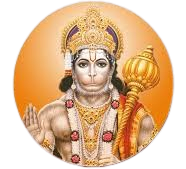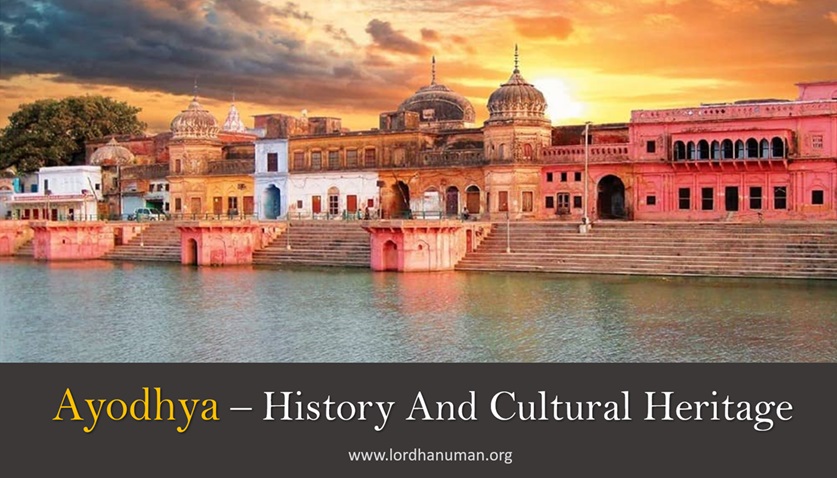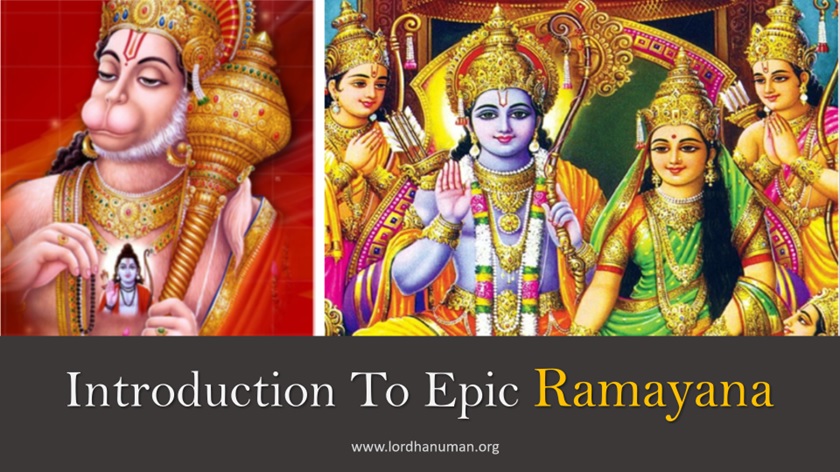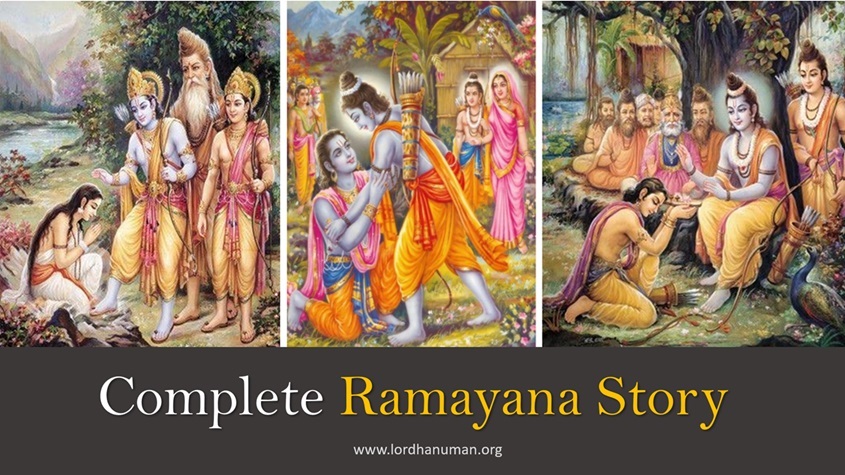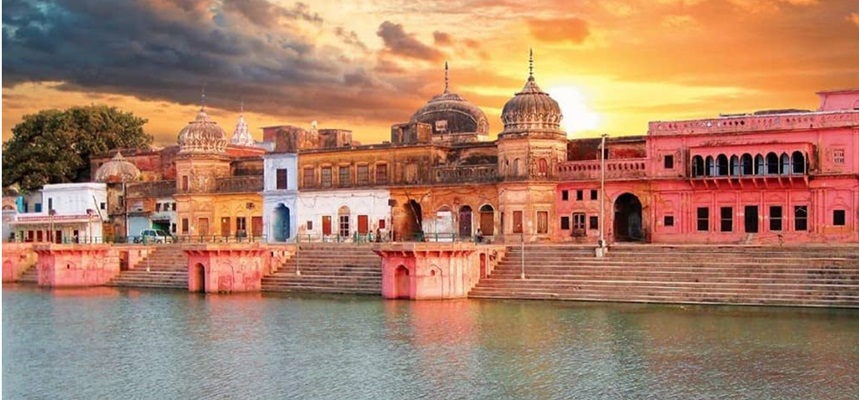
Ayodhya
अयोध्या का ऐतिहासिक शहर
Complete Guide To Historic City Of Ayodhya And Cultural Heritage
Ayodhya, a city with a timeless legacy, holds a special place in the hearts of Hindus and within the tapestry of Sanatana Dharma. Revered as the birthplace of Lord Rama, Ayodhya’s history, significance, and cultural richness have resonated across millennia, making it a focal point of devotion and a symbol of India’s spiritual heritage.
The history of Ayodhya is deeply intertwined with the cultural, religious, and mythological fabric of India. Located in the northern state of Uttar Pradesh, Ayodhya is considered one of the seven holiest cities in Hinduism and holds immense significance in various religious texts and traditions.
Guptar Ghat Ayodhya
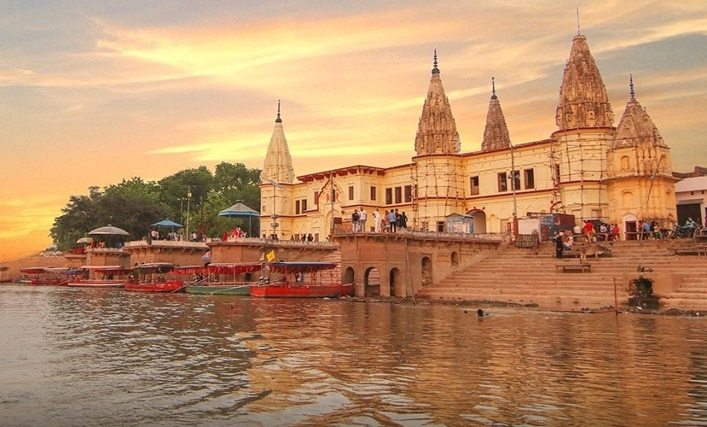
History Of Ayodhya
Ayodhya, situated on the banks of the sacred Sarayu River in Uttar Pradesh, India, is a city steeped in history and spirituality. Believed to be the birthplace of Lord Rama, Ayodhya has been a center of Hindu pilgrimage for centuries. It witnessed the grandeur of the ancient Kosala Kingdom and the reign of illustrious rulers, including Ikshvaku and Dasharatha.
Ayodhya’s history is intertwined with the Hindu epic, Ramayana. The Ramayana story narrates the life and exploits of Lord Rama. Over the centuries, Ayodhya has endured various cultural influences and architectural transformations. It became a significant center for Buddhism during Emperor Ashoka’s reign and later witnessed the construction of various temples and structures under different rulers.
In recent times, Ayodhya gained prominence due to the Ayodhya Ram Janmabhoomi-Babri Masjid dispute, which concluded with the construction of the Ram Mandir in 2020 after Supreme Court judgement in favour of Hindus . Today, Ayodhya stands as a symbol of India’s cultural and religious mosaic, embodying millennia of history and spirituality.
Ayodhya is a city situated on the banks of the Sarayu river in the Indian state of Uttar Pradesh. The historic city of Ayodhya, is the birthplace of the Hindu deity Lord Rama, and it has special significance in the great Hindu epic Ramayana.
The holy city of Ayodhya is the birthplace of Shri Ram and is regarded as the first of the seven most important pilgrimage sites for the followers of Sanatana Dharma devotees of Lord Rama and Hindus.
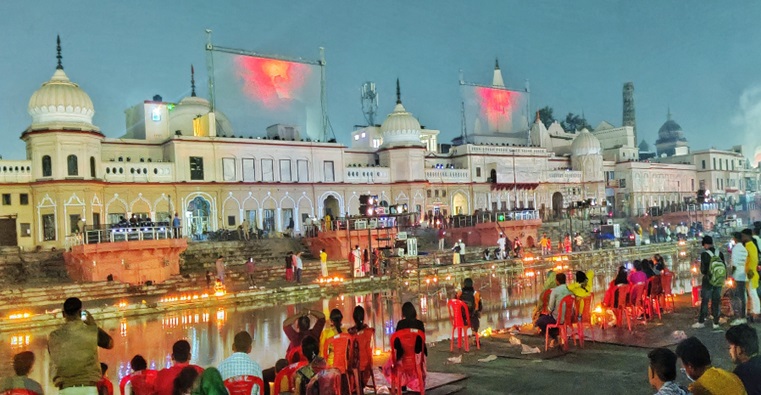
Ayodhya, with its profound historical roots, religious significance, and cultural richness, stands as a symbol of India’s spiritual heritage. As the birthplace of Lord Rama, Ayodhya continues to inspire millions of devotees and serves as a cultural beacon that transcends religious boundaries.
Its enduring legacy, depicted in scripture, art, urban landscape, and architecture, reinforces the values of dharma, unity, and cultural continuity, making Ayodhya a timeless and revered city in the landscape of Hinduism and Sanatana Dharma.
Ayodhya Deepotsav
Ayodhya Diwali Celebrations
The Ayodhya Deepotsav celebrations, especially during the Diwali festival, has gained significant prominence in recent years as a grand and spectacular event. The celebrations are marked by the lighting of a multitude of earthen lamps, creating a mesmerizing display of lights along the holy ghats and across the Ayodhya city.
The Diwali Deepotsav, which means festival of lights, is organised each year by the local administration and UP government. The Ayodhya Deepotsav is probably the grandest celebration organised each year.
The celebrations often culminate with a grand fireworks display, adding to the overall festive spirit. The night sky is lit up with colourful fireworks, creating a captivating visual spectacle.
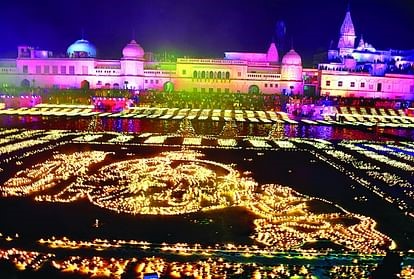
Artists dressed as Shree Ram, Sita mata, and Lakshmana descend via a helicopter (a symbol of the Pushpak viman) at a grand Ramkatha Park. The Sarayu river bank witnesses a grand aarti and is illuminated with colorful lightning and lakhs of diyas.
This mega event is attended by a large number of local residents as well as tourists visiting Ayodhya. This year’s Deepotsav festival saw 6,06,569 earthen lamps lit at Ram Ki Pairi, a Guinness Book World Record.
The Ayodhya Deepotsav during Diwali has become a symbol of cultural richness and religious significance, contributing to the city’s identity as a prominent pilgrimage and cultural destination.
Ayodhya Location
In summary, Ayodhya’s history is a tapestry woven with threads of mythology, religious significance, and historical developments. Its association with the Ramayana, along with its diverse cultural influences over the centuries, has shaped Ayodhya into a city that continues to capture the imagination of millions and remains an integral part of India’s cultural and religious landscape.
Ayodhya Today
Today, Ayodhya is a city that combines its ancient heritage with modern developments. The Indian Government led by Bhartiya Janta Party BJP under the leadership of Prime Minister Shri Narendra Modi is committed to develop Ayodhya as major tourist destination.
Historic city of Ayodhya is now very well connected by Air, Railway and roads. PM Modi has recently inaugurated Maharshi Valmiki International Airport and newly developed Ayodhya Dham Railway Station. The construction of the Ram Temple has added a new chapter to its history, making it a focal point of religious and cultural tourism.
New Maharshi Valmiki Airport
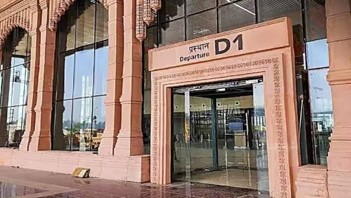
Ayodhya’s modern development as a major tourist destination is an ongoing process, and initiatives continue to unfold to enhance its appeal and accessibility. The city’s unique blend of history, spirituality, and cultural heritage positions it as a destination of significance for both pilgrims and tourists.
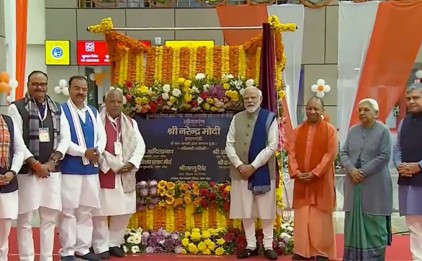
In summary, Ayodhya’s history is a tapestry woven with threads of mythology, religious significance, and historical developments. Its association with the Ramayana, along with its diverse cultural influences over the centuries, has shaped Ayodhya into a city that continues to capture the imagination of millions and remains an integral part of India’s cultural and religious landscape.
New Maharshi Valmiki Airport
Ayodhya Ram Mandir Construction
The construction of the Ram Temple in Ayodhya holds profound significance, marking a historic moment for the city and the entire nation. The temple is being built at the revered Ram Janmabhoomi site, the believed birthplace of Lord Rama, after a long-standing legal and socio-political dispute.
The construction of the Ayodhya Ram Mandir is not merely a structural endeavor; it symbolizes the restoration of a sacred site that has been at the heart of religious sentiments for centuries.
The significance of the temple extends beyond its religious and cultural importance. It reflects a spirit of harmony, resolution, and national unity, emphasizing the ethos of coexistence and respect for diverse beliefs.
Ayodhya Ram Mandir
Ram Temple Under Construction In Ayodhya
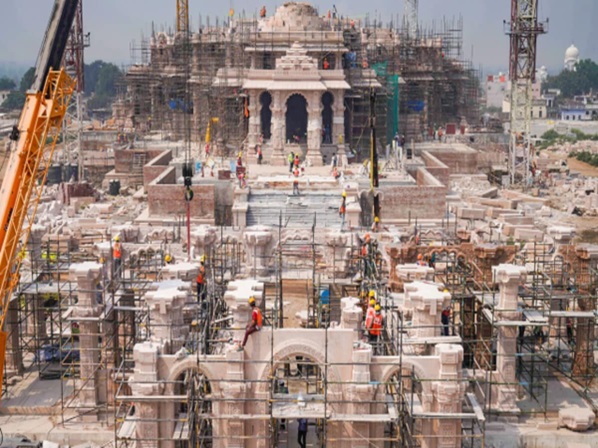
For Ayodhya, the temple construction has catalyzed infrastructural development and increased tourism, transforming the city into a major pilgrimage and cultural destination. It underscores Ayodhya’s identity as a beacon of spirituality, attracting devotees and tourists alike.
The completion of the Ram Temple embodies a shared cultural heritage, bridging historical divides and fostering a sense of collective pride and reverence for Ayodhya’s rich history and religious legacy.
Ayodhya Ram Mandir Bhoomi Pujan
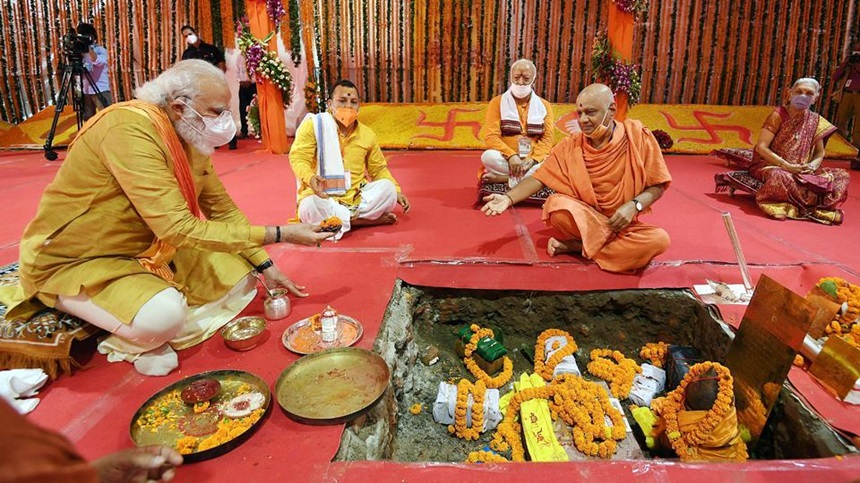
Ayodhya Historical Roots
Ancient Heritage
Ayodhya’s antiquity is deeply embedded in the annals of ancient Indian history. Its origins are traced back to the Treta Yuga, the era in which Lord Rama is believed to have lived. The city finds mention in various ancient texts, including the Ramayana and the Mahabharata.
Scriptural References
The Ramayana, composed by the sage Valmiki, narrates the life of Lord Rama and his association with Ayodhya. The city’s royal grandeur, the birth of Rama, and his subsequent exile are pivotal events in this epic. Ayodhya’s role is not confined to religious texts; it has permeated into the cultural and spiritual ethos of the nation.
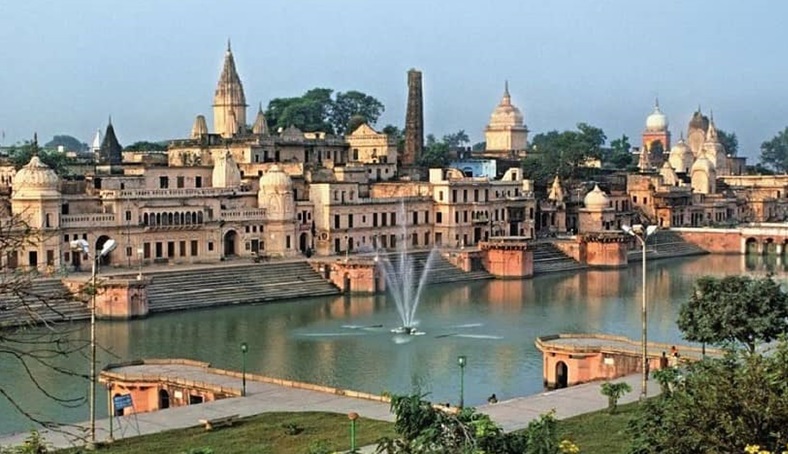
Ayodhya’s Significance in Hinduism
Birthplace of Lord Rama
Ayodhya is celebrated as the birthplace of Lord Rama, the seventh incarnation of Lord Vishnu. Rama’s life, characterized by adherence to dharma (righteousness), has made Ayodhya a sacred pilgrimage site for Hindus worldwide. The Janmabhoomi (birthplace) of Lord Rama is particularly venerated.
Ramayana’s Influence
The Ramayana, an epic poem attributed to Maharshi Valmiki, immortalizes Ayodhya as the capital of the illustrious King Dasharatha, Rama’s father. The narrative of Rama’s life, his exile, and eventual return to Ayodhya have become foundational elements of Hindu philosophy and morality.
Pilgrimage Destination
Ayodhya draws millions of pilgrims annually who seek to connect with the divine energy associated with Lord Rama. The city’s ghats along the Sarayu River and various temples dedicated to Rama and other deities make it a significant pilgrimage destination.
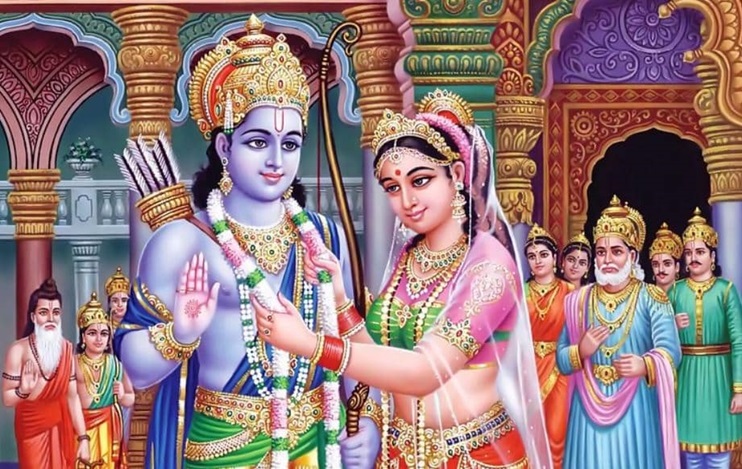
Ayodhya's Cultural Heritage
Architectural Marvels
Ayodhya is home to architectural marvels that reflect its rich cultural heritage. Temples, ghats, and historical sites showcase a blend of various architectural styles, from ancient to medieval.
Temples And Shrines
The city boasts numerous temples dedicated to Lord Rama and other deities. The Ram Janmabhoomi, Hanuman Garhi, and Kanak Bhavan are among the sacred sites that attract devotees and tourists alike.
Festivals And Celebrations
Ayodhya comes alive during festivals, with grand celebrations and processions. Diwali, the festival of lights, holds special significance as it commemorates Lord Rama’s return to Ayodhya after defeating Ravana. The city’s vibrancy during these festivals reflects its cultural exuberance.
Hanuman Garhi Temple , Ayodhya
Hanuman Garhi is a prominent temple dedicated to Lord Hanuman in Ayodhya, Uttar Pradesh. Perched atop a hill, it is a major pilgrimage site visited by devotees seeking the blessings of the monkey god. The temple is known for its massive statue of Lord Hanuman and is accessed by a flight of 76 steps.
According to local belief, Hanuman Garhi is a powerful and protective deity, and visiting the temple is considered auspicious for devotees. The temple complex also includes shrines dedicated to Lord Rama and Goddess Anjani, adding to its religious significance in the cultural landscape of Ayodhya.
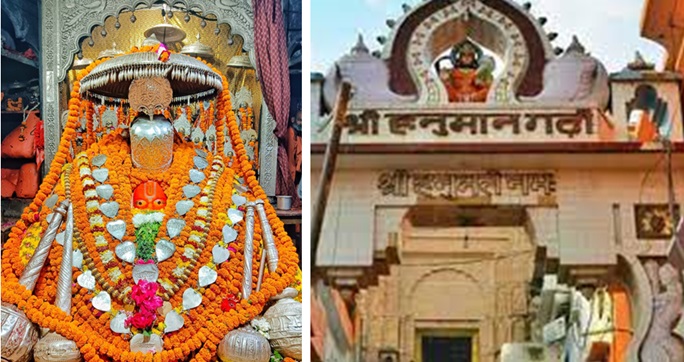
Top Places to visit In Ayodhya
Ayodhya, a city steeped in history and spirituality, offers a range of significant places to visit that are deeply connected to Hindu mythology and culture.
These sites collectively create a spiritual and historical tapestry, drawing pilgrims, tourists, and history enthusiasts to Ayodhya. Each place carries its unique significance, contributing to Ayodhya’s cultural and religious heritage.
Here are some of the top places to visit in Ayodhya:
Ram Ki Paidi
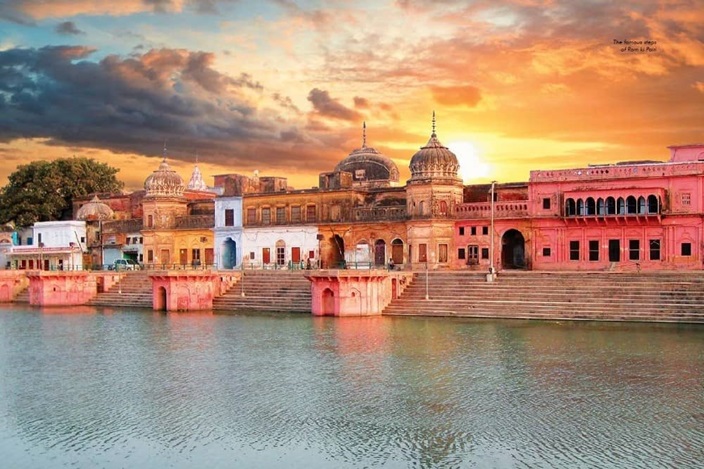
Nageshwarnath Temple
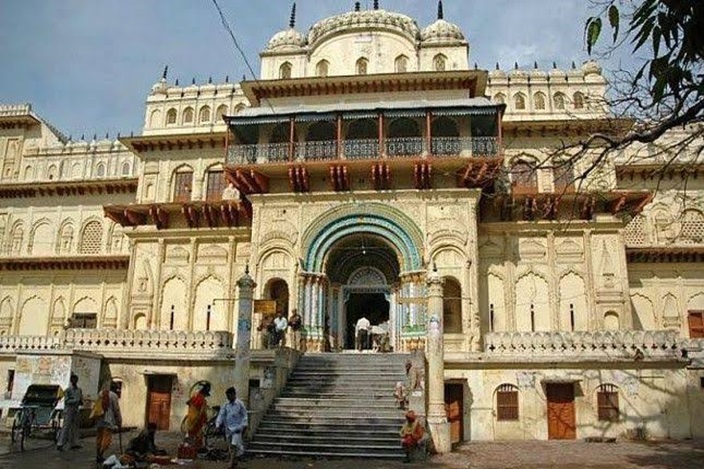
- Ram Janmabhoomi:
The birthplace of Lord Rama is a sacred site and the focal point of Ayodhya’s religious significance. The ongoing construction of the Ram Temple at this location is a major attraction.
- Hanuman Garhi:
Hanuman Garhi is a prominent temple dedicated to Lord Hanuman. Perched on a hill, it provides a panoramic view of Ayodhya. Devotees often climb the 76 steps to seek the blessings of Lord Hanuman.
- Kanak Bhavan:
Kanak Bhavan is a beautiful temple dedicated to Lord Rama and Sita. According to legend, it was a gift from Sita’s father to her as a wedding present. The temple’s architecture and religious significance make it a must-visit.
- Treta Ke Thakur:
Treta Ke Thakur is an ancient temple that is believed to be the site where Lord Rama performed the Ashwamedha Yajna. The temple is an important pilgrimage spot for devotees.
- Swarg Dwar:
Swarg Dwar, or the Gateway to Heaven, is associated with Lord Rama’s ascent to heaven. Pilgrims believe that passing through this gate absolves them of their sins.
- Nageshwarnath Temple:
Dedicated to Lord Shiva, the Nageshwarnath Temple is one of the oldest temples in Ayodhya. It is believed to have been established by Lord Rama’s son, Kush.
- Ramkatha Park:
Ramkatha Park is a beautifully landscaped garden that depicts various scenes from the Ramayana through sculptures and artwork. It provides a serene environment for reflection and relaxation.
- Mani Parbat and Sugriv Parbat:
These twin hillocks are associated with legends from the Ramayana. Mani Parbat is believed to be a portion of the Sanjeevani Parvat, which Lord Hanuman carried to heal Lakshmana.
- Guptar Ghat:
Guptar Ghat is a significant bathing ghat on the banks of the Sarayu River. It is believed that Lord Rama took a dip here during his exile. Pilgrims often perform rituals and take holy baths at this ghat.
- Lakshman Ghat:
Named after Lord Rama’s brother Lakshmana, this ghat is another important bathing spot on the Sarayu River. Pilgrims visit to pay homage and perform religious rituals.
Ghats Of Ayodhya
Ayodhya, a city with a rich cultural and religious heritage, is adorned with several ghats along the banks of the sacred Sarayu River. These ghats not only offer breathtaking views but also hold immense spiritual significance, drawing devotees and tourists alike.
These ghats collectively form a pilgrimage circuit, allowing devotees to partake in rituals, take holy dips, and immerse themselves in the spiritual atmosphere of Ayodhya. The ghats also serve as a testament to the city’s enduring cultural and religious heritage, attracting visitors who seek solace, enlightenment, and a connection to the sacred traditions embedded in the heart of Ayodhya.
The BJP State Government led by Chief Minister Shri Yogi Adityanath And Prime Minister Narendra Modi have initiated major redevelopment projects for all major ghats as part of Ayodhya Development.
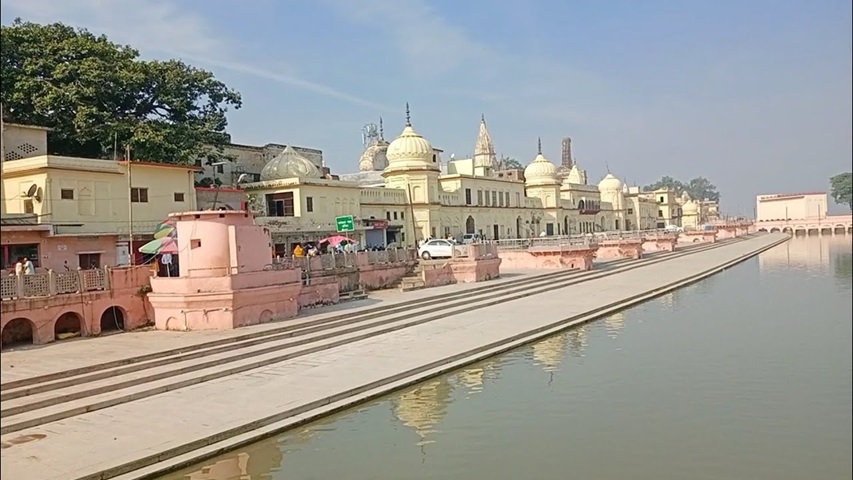
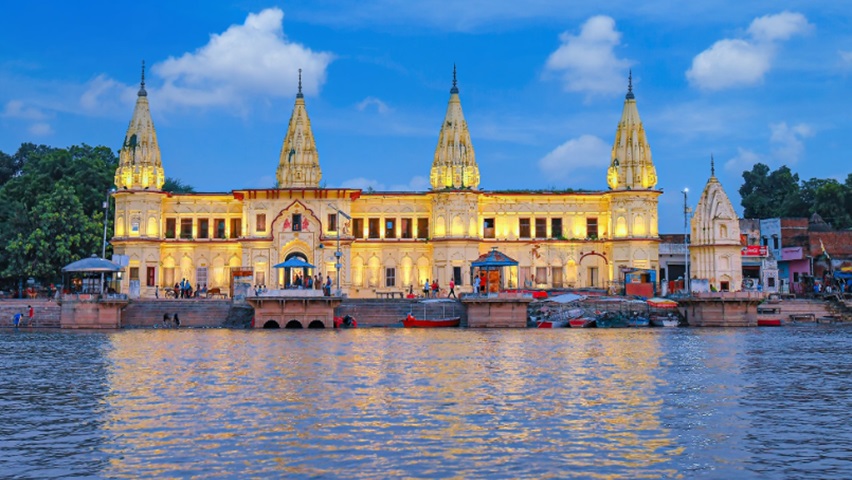
Naya Ghat:
Naya Ghat is one of the prominent ghats, known for its historical importance. It is believed to be the place where Lord Rama took a dip before his coronation, symbolizing purification.
Guptar Ghat:
Guptar Ghat is associated with the cave where Lord Rama is believed to have taken refuge during his exile. Pilgrims visit this ghat to seek the blessings of Lord Rama.
Raja Ghat:
Raja Ghat is named after Raja Dasharatha, Lord Rama’s father. Pilgrims believe that taking a dip in the sacred river at this ghat absolves them of sins.
Ram Ghat:
Ram Ghat is a popular spot for pilgrims and tourists. It is believed to be the place where Lord Rama performed the Tarpan ceremony for his ancestors.
Chakratirtha Ghat:
Chakratirtha Ghat is associated with the legend of Lord Rama’s Chakra (discus) being thrown into the Sarayu River. Pilgrims take a dip here during Kartik Poornima.
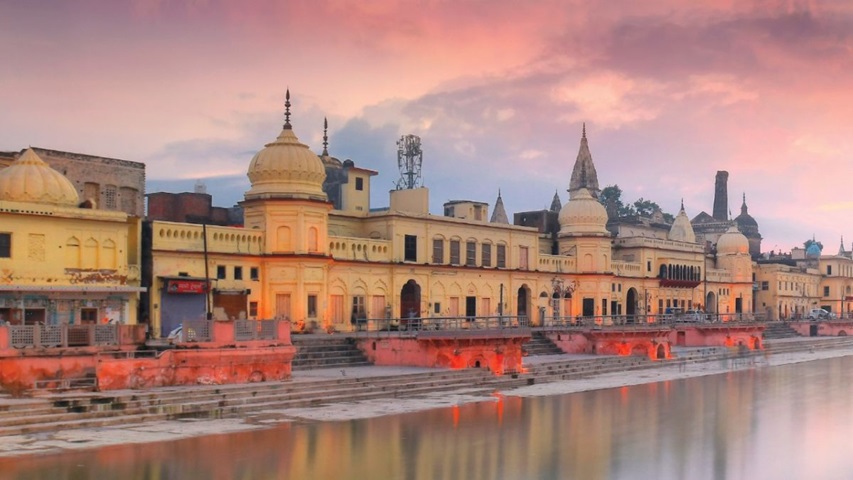
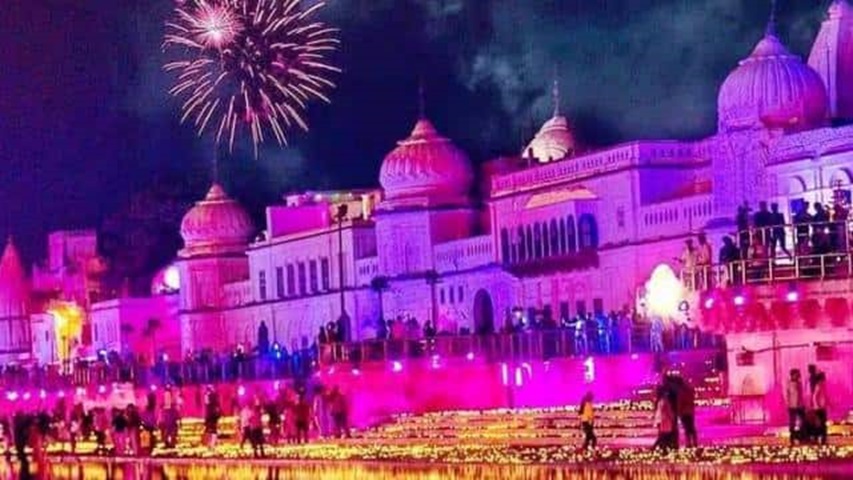
Koti Tirtha:
Koti Tirtha is a sacred bathing spot with steps leading down to the river. Pilgrims believe that taking a dip here during the Kartik month brings immense blessings.
Rishi Ghat:
Rishi Ghat is dedicated to the sages who performed rigorous penance on its banks. Devotees visit this ghat to honor the ancient traditions of Ayodhya.
Gulab Bari Ghat:
Gulab Bari Ghat is known for the beautiful Gulab Bari or Rose Garden nearby. The ghat provides a serene environment for devotees and visitors.
Lakshman Ghat:
Lakshman Ghat is associated with Lord Rama’s brother Lakshmana. Devotees believe that taking a dip here brings peace and harmony.
Sita Ghat:
Sita Ghat is believed to be the spot where Sita, the consort of Lord Rama, entered the earth. Pilgrims pay homage to Sita at this ghat.
Braj Ghat:
Braj Ghat is associated with Lord Krishna, connecting the spiritual traditions of Ayodhya with the broader cultural and religious tapestry of Hinduism.
Saryu Kunj Ghat:
Saryu Kunj Ghat is known for its peaceful ambiance and lush green surroundings. Pilgrims often visit this ghat for quiet reflection and meditation.
How to Reach Ayodhya ?
Ayodhya By Air
Lucknow International Airport is the nearest Airport which is 152 Kms from Ayodhya. Ayodhya is about 158 Kms from Gorakhpur Airport, 172 Kms from Prayagraj Airport and 224 Kms from Varanasi Airport.
New Ayodhya Airport
PM Narendra Modi Inaugurates New Ayodhya Airport
Prime Minister Narendra Modi inaugurated the Maharishi Valmiki Airport in Ayodhya on Saturday 30th December 2023.
Maharshi Valmiki, a revered sage in Hindu tradition, is credited with composing the epic Ramayana. Written in Sanskrit, the Ramayana story narrates the life of Lord Rama, an incarnation of the Lord Vishnu, his wife Sita, and his loyal devotee Hanuman.
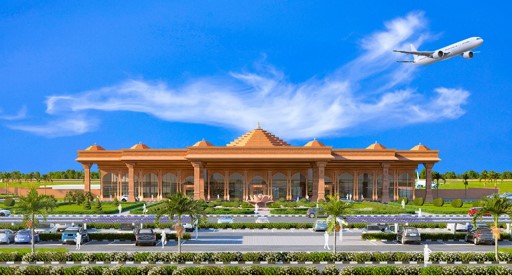
The new airport in Ayodhya will provide a major impetus to develop the Ayodhya city as major tourist destination. The Ayodhya airport will be connected to both domestic and international flights.
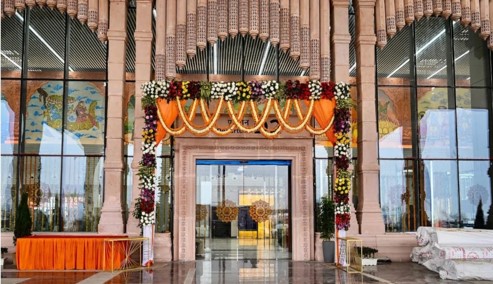
Maharishi Valmiki Airport , Ayodhya Location
Ayodhya By Railway
Faizabad and Ayodhya are major railway stations of the district and are well connected to almost all major cities and towns. By Rail route Faizabad is 128 kms. from Lucknow, 171 kms. from Gorakhpur, 157 kms. from Allahabad and 196 kms from Varanasi. By Rail route Ayodhya is 135 kms. from Lucknow, 164 kms. from Gorakhpur, 164 kms. from Allahabad and 189 kms from Varanasi.
New Ayodhya Dham Railway Station
PM Narendra Modi Inaugurates New Ayodhya Dham Railway Station
Indian Prime Minister Narendra Modi has inaugurated the newly redeveloped to international standards, Ayodhya railway station on December 30, 2023.
The newly constructed Ayodhya railway junction was also given a new name: Ayodhya Dham junction. PM Modi also flagged of number of high speed modern “Vande Bharat” trains to improve rail connectivity of Ayodhya.
The new Ayodhya Dham railway station building has been given a temple architecture facade as a tribute to Lord Ram, while the interior boasts “airport-like” amenities.
The inauguration of the new station building assumes significance ahead of the consecration ceremony at the Ayodhya Ram Mandir on January 22, 2024, after which Ayodhya is expected to see a rush of pilgrims and tourists.
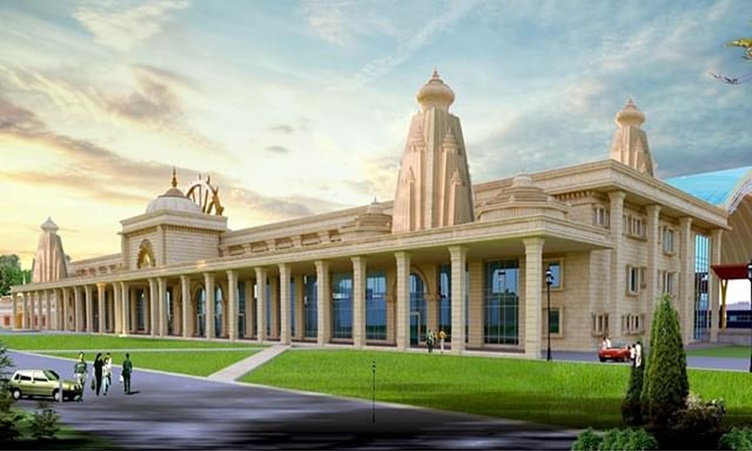
Ayodhya Dham Railway Station Location
Ayodhya By Road
Ayodhya, located in the northern Indian state of Uttar Pradesh, is well-connected by road to various cities and towns in the region. The road conditions of the most national highways are very good.
Here are general instructions on how to reach Ayodhya by road:
Bus Service To Ayodhya
Services of Uttar Pradesh Transport Corporation buses are available 24 hours a day, and it is very easy to reach here from all places. By Road Faizabad is 152 kms from Lucknow, 158 kms from Gorakhpur, 172 kms from Allahabad and 224 kms from Varanasi. By Road Ayodhya is 172 kms from Lucknow, 138 kms from Gorakhpur, 192 kms from Allahabad and 244 kms from Varanasi.
Ayodhya Dham Bus Station Location
Ayodhya Distance By Road From Major Cities
From Lucknow:
- Distance: Approximately 140 kilometers.
- Route: Lucknow is the nearest major city. You can take National Highway 28 (NH28) or National Highway 330 (NH330) to reach Ayodhya.
- From Varanasi:
- Distance: Approximately 200 kilometers.
- Route: Take National Highway 31 (NH31) or National Highway 31B (NH31B) to connect to NH28, which leads to Ayodhya.
- From Kanpur:
- Distance: Approximately 250 kilometers.
- Route: Travel on National Highway 19 (NH19) towards Lucknow, and then take NH28 to reach Ayodhya.
- From Allahabad (Prayagraj):
- Distance: Approximately 180 kilometers.
- Route: Head towards Lucknow on NH19, and then take NH28 to reach Ayodhya.
- From Gorakhpur:
- Distance: Approximately 200 kilometers.
- Route: Take National Highway 27 (NH27) towards Faizabad, and then connect to NH330 for Ayodhya.
From Delhi:
- Distance: Approximately 700 kilometers.
- Route: Take National Highway 44 (NH44) towards Kanpur, then connect to NH19 and NH28 to reach Ayodhya.
From Agra:
- Distance: Approximately 500 kilometers.
- Route: Take National Highway 44 (NH44) towards Kanpur, and then connect to NH19 and NH28 for Ayodhya.
By Bus:
- Uttar Pradesh State Road Transport Corporation (UPSRTC) operates buses to Ayodhya from various cities in the state.
- Private bus operators also provide services to Ayodhya from neighboring states.
By Car:
- You can hire a taxi or drive to Ayodhya from nearby cities. The roads are well-maintained, and the journey offers scenic views.
